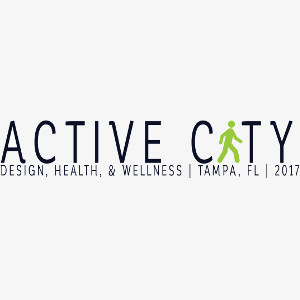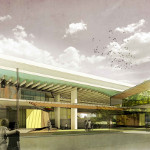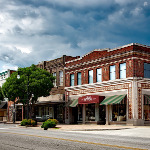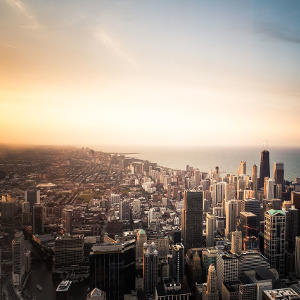|
|

|
Cities benefit from globalization
It is no overstatement to say that cities are the beneficiaries of openness, collaboration, free trade and the reduction of national boundaries. How do you balance the "political trilemma" where democracy, national determination and globalization are pulling in different directions?
by Nikolaus Philipsen, FAIA

|
Santa Fe rail yard revival
Democratic urbanism transforms the community
In the 1990s, Santa Fe's obsolete rail yard was slated for conventional development. The proposal was turned down by the community in favor of a bold experiment that involved thousands of citizens in the achievement of an authentic community place celebrated by locals and recognized as a national model. View the film for the story and reflections from local leaders of the R/UDAT process.

|

|
 |
Active City Conference: Jan. 26-27, 2017
Design, Health & Wellness | Tampa, FL | Cost: $215
Join us for ACTIVE CITY, a multidisciplinary exchange of ideas on how the intersection of health and urban design is shaping communities. This 2-day conference will feature presentations by Gary Gaston, Executive Director of Nashville Civic Design Center; Vikas Mehta, PhD, University of Cincinnati; Shawn Drinkard, Director of Placemaking from Tampa Downtown Partnership, and more!

|
Across the AIA
How to transform design and health research into real-world strategies
How can architects, designers, and health professionals best apply design and health research in their communities? The outcomes of a Design & Health Research Consortium meeting offer insights into strategies, tactics, tools, and tips for connecting the academy with practice, government, and a variety of partners.

|

|

© Bryan Hollar, Chet Morgan, Nate Wood, Joe Baldwin
|
Emerging Professional Exhibit 2016
The theme of this summer's Emerging Professional Exhibit 2016 was "It Takes a Community." Selected projects showcase the best work from young designers highlighting community impact and engagement, including several focused on regional or urban design.

|
|
Symbiosis—Kin Lam; Xibing Yang
A design for earthquake-resistance structures in China, upgrading irrigation, energy, and waste systems.
A Transitional Community—Silvia Izaguirre, Assoc. AIA; Irma Sifontes Romero, Assoc. AIA
An urban greenspace in Ciudad Juarez to mend social and ecological issues on the US/Mexico border.
Unclouded Vision—Bryan Hollar, AIA; Chet Morgan, Assoc. AIA; Nate Wood, Assoc. AIA; Joe Baldwin, AIA
Re-imagines part of Portland's I-405 and offers solutions for the homeless of a fragmented urban area.
|
Build America Summit: Nov. 29-30, 2016
Hosted by AIA President Russell Davidson, FAIA
Join AIA, allied industry partners, and national thought leaders in a critical conversation to renew and rebuild America's social infrastructure—the public buildings and spaces that are the heart of our communities.
Held in New York City, the summit is an unparalleled opportunity to develop critical recommendations for the future.

|

|

|
Eight factors to consider when designing solar-ready roofs
There are many factors to consider when making a building design solar-ready, including ordinances, utility infrastructure and pricing, energy generation goals, and roofing factors. While a lot to weigh, it can be a great benefit to the building owner once all considerations are thoroughly examined.
by Brad Gellert, AIA; TDBP Techniques newsletter

|
In the News
How urban design perpetuates racial inequality—and what we can do about it
Every city's organization bears the fingerprints of planners and policy makers who have shaped them for decades. At the root of many of these practices is racism, and modern cities bear the legacy of that discrimination.
In an era of social protest it's time to reassess the practices that have perpetuated these problems—and how we fix them.
by Diana Budds, Fast Company

|

|

|
Designing the future of play
Over the next several months, 50 innovative recreation spaces will spring up in cities across the U.S. These play spaces are not of the typical swing-set and slide variety, and all build off of existing municipal resources.
by Eillie Anzilotti, CityLab

|
The hip-hop architect on how music and the environment can influence one another
By looking at how architecture changes the community, Michael Ford want us to consider how community can shape architecture. It's not just about looking back at the ways urban planning and housing policy created the environment for new forms of music; it's how the ethics and ethos of hip-hop can help inspire new solutions for designing our cities.
by Patrick Sisson, Curbed

|

|
|
|
|
|
|